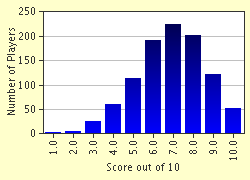Quiz Answer Key and Fun Facts
1. A Tennessee receiver goes up for a catch on the sideline. Before he has a chance to come down inbounds, he is pushed out of bounds by a South Carolina defensive back. Does the Tennessee player get credit for making the catch?
2. NC State decides to go for a two-point conversion against Wake Forest. The NC State quarterback throws a pass that is intercepted and run back all the way to their end zone. How does the official rule?
3. Iowa lines up for a 48-yard field goal attempt against Wisconsin. The ball is snapped from the 31-yard line and placed perfectly, but the kick misses wide right and short, bouncing at the 2-yard line and rolling through the end zone. Where is the ball spotted for Wisconsin?
4. On 3rd down and 6 at his own 42-yard line, Purdue's quarterback tries to elude Michigan's fierce rush. In a desperate attempt to avoid the sack, he throws the ball from the 34-yard line, but it lands well short of any eligible receiver. The referee flags the quarterback for intentional grounding. What is the proper penalty?
5. College football rules do not require the white half-stripes that appear on the football.
6. Which of the following is NOT true about overtime in college football?
7. In college football, a receiver is required to get both feet down inbounds in order to get credit for a pass reception.
8. There is no two-minute warning in college football.
9. Where is the football spotted for kickoff to start a college football game, or to start play after a touchdown or successful field goal try?
10. How much time does a college football team have to put the ball in play?
Source: Author
cag1970
This quiz was reviewed by FunTrivia editor
ozzz2002 before going online.
Any errors found in FunTrivia content are routinely corrected through our feedback system.

